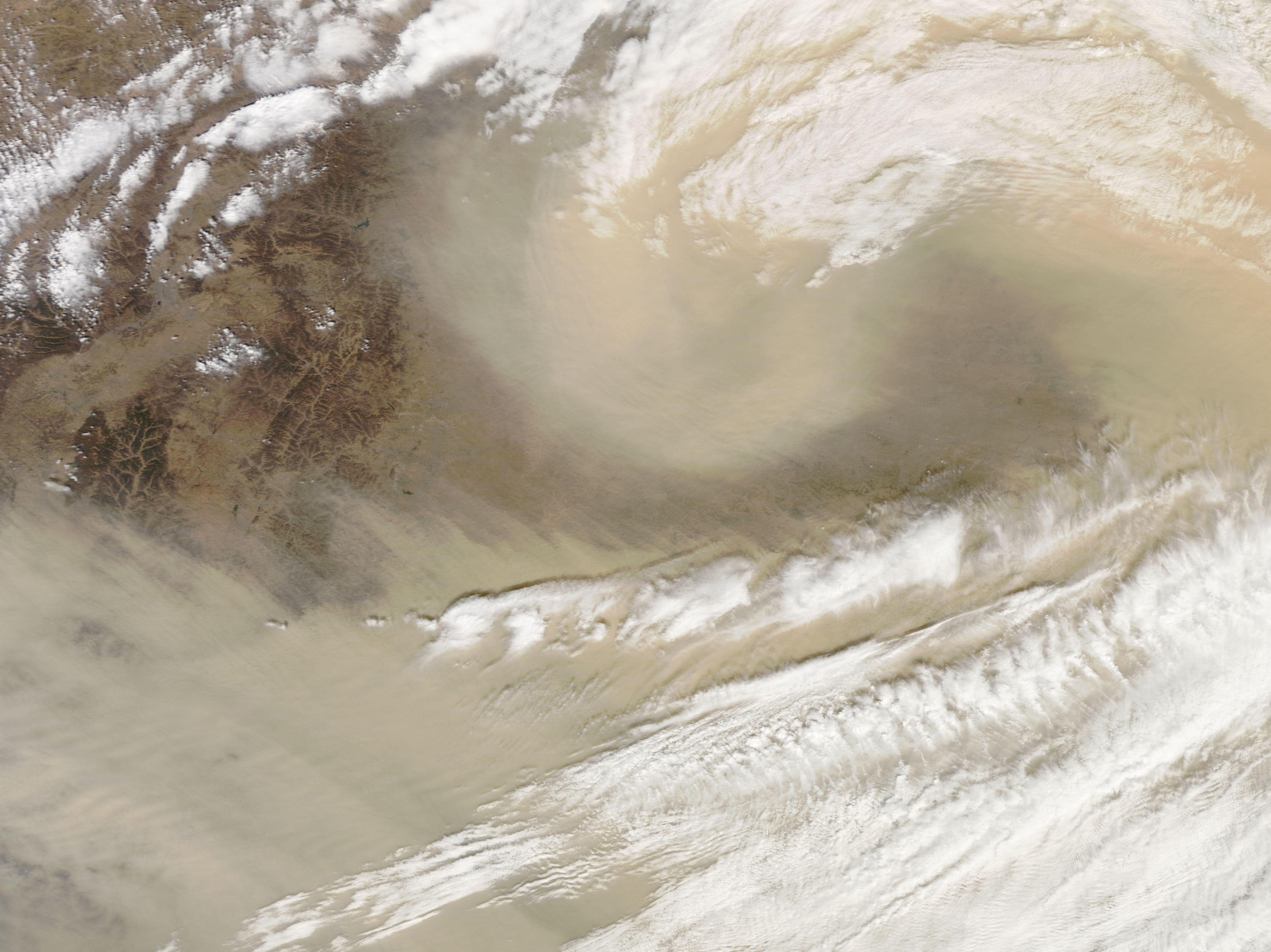[/caption]
A sand storm, also known as a dust storm is an atmospheric event when strong winds lift dust from one region and carry it into another. They’re most common in arid, desert regions where there’s little vegetation to hold the topsoil and sand down. Large sand storms can carry dust thousands of kilometers; dust that started in the Arabian desert can be dropped into the Pacific Ocean.
Sand storms get going when there’s a very dry region, without wet soil to hold the particles together. The smallest particles of sand can be pulled out of the ground by the wind, and held in suspension by the wind. It’s thought that static electricity in the storm can cause even more particles to pull out of the ground in addition to the wind effect. In some cases the dust is held low to the ground, but with the right atmospheric conditions, the sand can be carried more than 6 km high in the atmosphere.
Although sand storms are a natural event, it’s believed that poor farming techniques contribute to the problem. As the topsoil is depleted and erodes away by farming and grazing animals, it exposes the underlying sand and dust. This situation led to the huge dust storms of the Dust Bowl in the 1930s in the United States.
A dust storm can be quite a hazard if you get caught in one. The storms can spread over hundreds of kilometers, with driving winds that can be over 40 km/h. The sand can be thick enough to obscure visibility down to a very short distance. The dust can also be a danger to people with asthma and other respiratory illnesses.
Dust storms don’t just happen on Earth, they can also happen on Mars. In fact, dust storms can become so large on Mars they obscure the entire planet. When NASA’s Mariner 9 spacecraft arrived at Mars in 1971, there was a huge dust storm raging. Only the volcano Olympus Mons was visible above the haze of the dust storm. The most recent planet-wide dust storm occurred in 2007, posing a risk to the Mars Exploration Rovers. They rely on sunlight to power their solar panels, but the dust settling on their panels was reducing their power output.
We have written many articles about sand storms for Universe Today. Here’s an article about the black sand beaches, and here are some sandstorm pictures.
If you’d like more info on sandstorms, check out Visible Earth Homepage. And here’s a link to NASA’s Earth Observatory.
We’ve also recorded an episode of Astronomy Cast all about planet Earth. Listen here, Episode 51: Earth.

